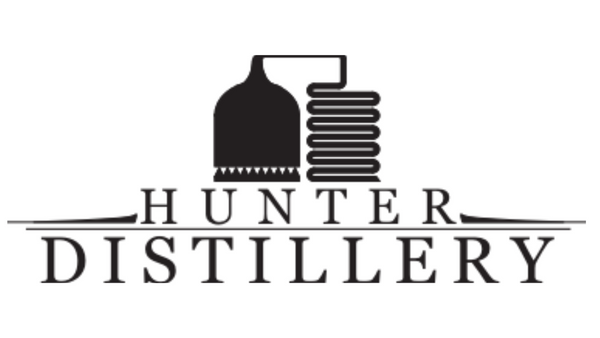Visit Our Cellar Door and Distillery
You will enjoy our unique "test tube" tasting experience at Hunter Distillery.
A selection of your choice from our full product range is available 7 days a week, 10am - 5pm.
Tasting fees are $10.00 per person, non-refundable. 6 x 4ml tastings.
Group tastings available. Maximum group size is 20 guests.
Please note:
NO open alcohol is allowed on the Hunter Distillery site - patrons seen with open alcohol will be refused admission.
Also, if anyone is deemed intoxicated, they (and their whole group if applicable) will be refused admission and asked to leave the site.

Gin is a distilled alcoholic beverage that is typically made by flavouring neutral grain spirit with juniper berries and other botanicals.
The exact process of making gin can vary depending on the specific recipe and production method, but there are a few key steps that are generally involved.

Neutral spirit:
The first step in making gin is to produce a neutral spirit.
This is typically done by fermenting a base ingredient, such as grains or molasses, to produce a low-alcohol wash. The wash is then distilled to increase the alcohol content, resulting in a neutral spirit with little flavour or aroma.
Botanicals:
Once the neutral spirit has been produced, it is then infused with a variety of botanicals. Juniper berries are the key botanical ingredient in gin, and are required by law to be the predominant flavour in order for a spirit to be considered gin. Other common botanicals include coriander, angelica root, citrus peel, orris root, and cardamom, though the exact blend of botanicals used can vary widely.
Maceration:
The botanicals are typically added to the neutral spirit through a process called maceration, in which the spirit is left to soak with the botanicals for a period of time. This allows the flavours and aromas of the botanicals to infuse into the spirit.
Distillation:
Once the maceration process is complete, the spirit is then distilled again to remove any impurities and create a clear, flavorful gin.
There are two main methods of distillation used in gin production: pot distillation and column distillation.
Pot distillation is a traditional method that involves heating the spirit and botanicals in a large pot still, while column distillation is a more modern method that involves passing the spirit and botanicals through a series of columns to extract and concentrate the flavours.
Dilution:
After the distillation process is complete, the gin is typically diluted with water to reduce the alcohol content and create a more balanced flavour profile. The final alcohol content of gin can vary widely, but is typically around 40% ABV.
Aging: Some gins may be aged in barrels or casks for a period of time to add additional complexity and depth to the flavour. However, most gin, including ours, is bottled and sold immediately after the distillation and dilution process is complete.
Overall, the process of making gin is a complex and intricate one that requires a deep understanding of the botanicals used and the distillation process itself.
The end result is a flavourful and aromatic spirit that is enjoyed by gin enthusiasts around the world.
Exclusive Valli Range

Distillation: The process begins with the production of gin, which is usually distilled in the traditional manner. The base spirit is distilled with botanicals, such as juniper, coriander, citrus peels, and others, to create the desired flavour profile. This gin is typically clear and unaged at this stage.
Barrel Selection: The choice of barrel is crucial to the aging process. Most commonly, oak barrels are used, but different types of oak (American, European, etc.) and previous contents of the barrel (e.g., whiskey, sherry, or wine) can significantly influence the final product. The barrels might be new or previously used, with the latter imparting flavours from the previous spirit they held.
Aging: The gin is placed in the barrels and left to age for a period that can range from a few months to several years, depending on the desired outcome. During this time, the gin interacts with the wood, absorbing flavours and aromas from the barrel. The wood can impart notes of vanilla, caramel, spice, and even subtle tannins to the gin. The aging process also allows for oxidation, which can soften and round out the spirit’s flavours.
Monitoring and Tasting: Throughout the aging process, the gin is regularly sampled to monitor its development. The distiller decides when the gin has reached the desired flavour profile, which can vary widely depending on factors like barrel type, environmental conditions, and the original gin recipe.
Bottling: Once the aging process is complete, the gin is removed from the barrels and bottled. Some distillers might choose to filter the gin lightly to remove any wood particles, while others may leave it unfiltered to retain all the characteristics imparted by the barrel.
Effects of Barrel Aging on Gin
Flavour Development: Barrel aging adds depth and complexity to gin, introducing flavours that are not present in traditional, unaged gin. Common notes include vanilla, oak, caramel, spices, and sometimes even a hint of smokiness. The aging process can also mellow the more volatile elements of the spirit, leading to a smoother, richer taste.
Colour: Unlike unaged gin, which is typically clear, barrel-aged gin takes on a golden or amber hue from the wood. The intensity of the colour depends on the length of time spent in the barrel and the type of wood used.
Mouthfeel: The aging process often enhances the mouthfeel of the gin, giving it a richer, more velvety texture. This is partly due to the extraction of wood compounds like lignins and tannins, which can contribute to a fuller body.
Versatility in Cocktails: Barrel-aged gin offers a unique twist on classic gin cocktails, adding new dimensions to drinks like the Negroni, Martini, or even whiskey-based cocktails. Its complexity allows it to stand up well in both spirit-forward cocktails and more creative, modern concoctions.
